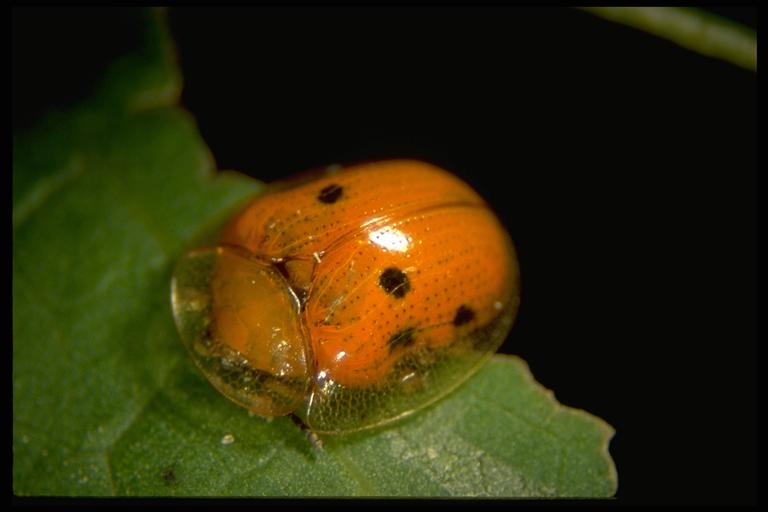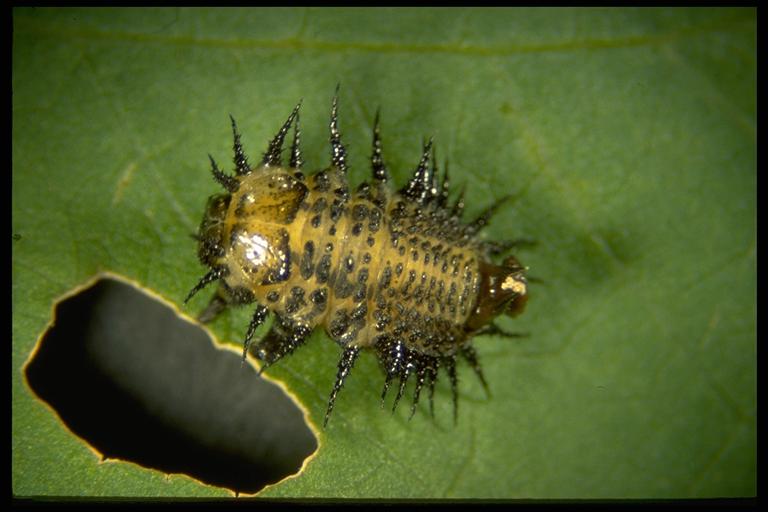
Golden tortoise beetle, Charidotella sexpunctata bicolor (Fabricius) (Coleoptera: Chrysomelidae), disturbed adult (undisturbed adults are golden). Photo by Drees.
Common Name: Tortoise beetle
Scientific Name: Varies
Order: Coleoptera
Description: Adults are broadly oval to round and nearly convex in shape with some sculpturing of the surface and the edges broadly expanded. They are green-gold with purple mottling and about 1/4-inch long.
A few related species have similar metallic appearance and may feed on different host plants. The golden tortoise beetle, Charidotella sexpunctata bicolor (Fabricius), is brilliant brassy or greenish-gold in life. When disturbed, the color becomes orange with black spots. The metallic coloration is lost completely in dead specimens, leaving them a dull reddish yellow color. They also are about 1/4-inch long.
Larvae of both species are spiny along the sides and have hook on the end of the abdomen. Larvae may carry fecal material on their back, which helps camouflage them and deter predators and parasites.
Life Cycle: As is characteristic of the family, the larvae and adults may be found on the same host plant. There are multiple generations per year.

A tortoise beetle, Chelymorpha sp. (Coleoptera: Chrysomelidae), larva. Photo by Drees.
Habitat and Food Source(s): This beetle and the larvae feed on foliage of anacua in south Texas; while other tortoise beetles feed on sweet potato and related plants.
Pest Status: Although the tortoise beetle is not considered a pest, the golden tortoise beetle occasionally may be a pest on sweet potatoes.
For additional information, contact your local Texas A&M AgriLife Extension Service agent or search for other state Extension offices.
Literature: Dillon and Dillon 1972.